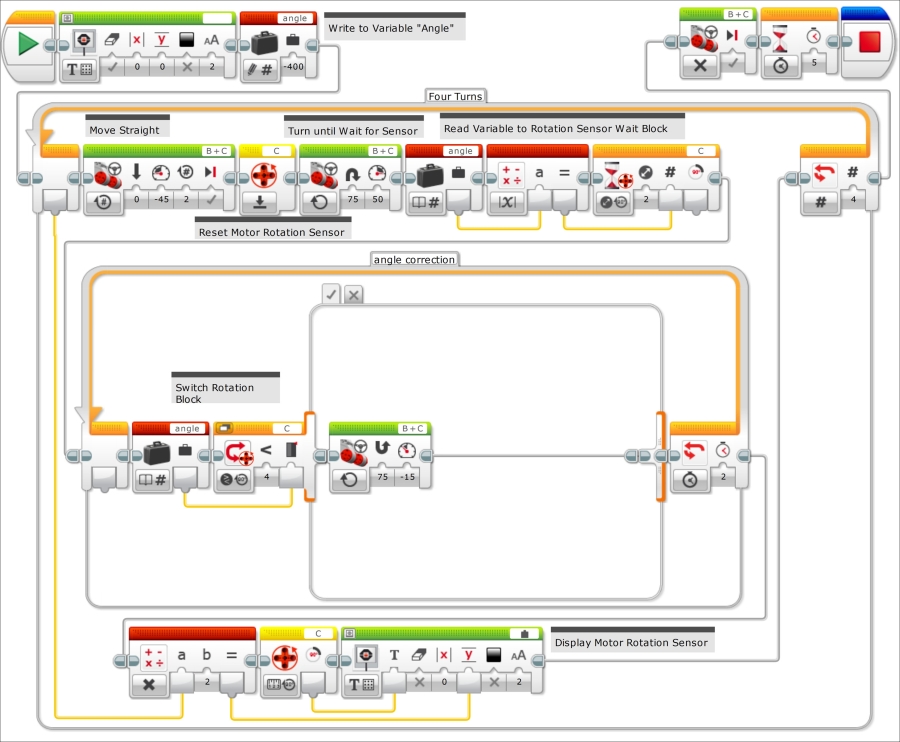In this chapter, we will explore some more advanced algorithms with a focus on what we need for navigation. This will be particularly useful for programming your robot to navigate an obstacle course or play a complex game, such as FIRST Lego League. In this chapter, we will cover how to:
Use Loops and Switches to drive in a square
Use Loops and Switches to avoid an obstacle
Navigate using Motor Rotation sensor feedback
Navigate using Gyro Sensor feedback
Simplify our program using My Blocks
Simplify our program using Arrays
Using any of our four base robots, we will make the robot go forward, make a 90 degree turn, go forward, and repeat this sequence several times. In this chapter, I have included programs using both the Gyro Sensor and a process of navigation called dead reckoning. Dead reckoning, which is short for deduced reckoning, consists of calculating how far the wheels of your robot should turn by using the built-in shaft encoders (Motor Rotation sensors...






